|
Listen to this article  |
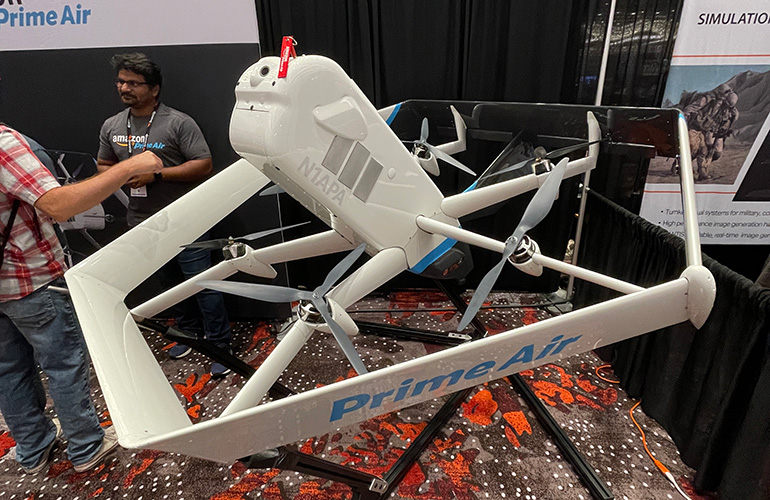
The Amazon Prime Air Drone was on display at the 2022 Commercial UAV Expo. | Credit: The Robot Report
I had the opportunity to attend the Commercial UAV show in Las Vegas earlier this month, and it was interesting to see the latest in commercial drone technology.
On the second day of the conference, David Boulter, the Federal Aviation Administration’s (FAA) Vice President of Flight Program Operations, gave the keynote speech. In his talk, Boulter said that the FAA is now putting more attention on meeting deadlines. This is important to vendors who require action from the FAA in order to commercialize their solutions.
The operational side of the FAA has historically been good at meeting deadlines, but now the regulatory side has the same expectations.
During the waiver period for new rules, especially for the recent remote ID project, the organization has learned a lot about soliciting feedback from a large set of users. The FAA wants to change how the UAS beyond visual line of sight (BVLOS) rules are implemented and use new methods to certify, track and enforce the new rules.
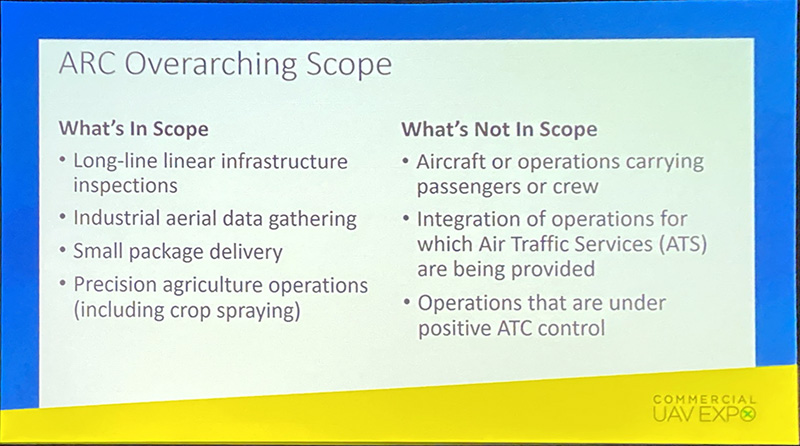
When evaluating the safety of drone operations, the FAA considers the full spectrum of potential hazards. He said it was clear that rules for operations in urban centers can be different from rules for operations in rural or unpopulated areas.
Boultier said that starting with a rule that already exists and making an exception from that rule seems to work better. From there the organization will attempt to make a template for exceptions.
The organization would much rather give permission for operations than deny them, but they have to prioritize the safety of the general public.
Also during the keynote, the news came that Matternet is getting a license so they can legally fly their M2 drone in the US. The new license enables the Matternet drone to fly over populated areas and over people. This will now enable the drones to be used for package delivery to homes.
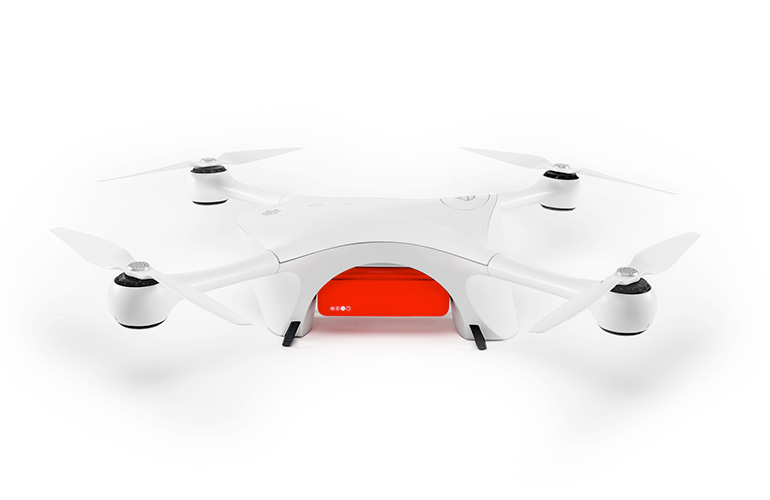
The Matternet M2 autonomous drone can carry payloads of up to 2 kilograms (4.4 pounds) over distances of up to 20 kilometers (12.4 miles). | Credit: Matternet
This sets the precedence for the other drone manufacturers to follow, so we can expect there to be more type certifications in the future.
On the Commercial UAV show expo floor, there were a number of drone delivery solutions. The most notable was the presence of Amazon Prime Air, showing off a static model of its delivery drone.
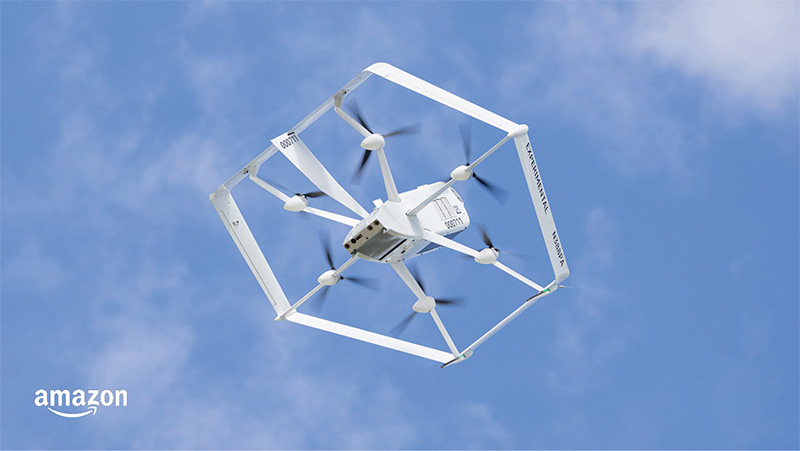
The Amazon Prime Air MK27-2 is the fourth generation of Amazon’s air delivery drone. | Credit: Amazon
The Amazon Prime Air drone is unique in its configuration and kinematics. At the core of the drone’s design is a hexacopter with four angled motors (for stable hover vectoring) and two straight-mounted motors for horizontal flight using the fixed wings for lift.
The other notable keynote was a panel discussion with the Beyond Visual Line of Sight (BVLOS) Advisory and Rulesmaking Committee (ARC). The committee recently finished its initial preparation of a draft of operational rules for BVLOS operations in the US.
These new rules now enter a feedback period, managed by the FAA, of six to nine months. During this time, the public can comment on the proposed rules. After that, the FAA will take the feedback, revise the draft and eventually bring the BVLOS rules and certification process into operation. This will occur in the next 12-24 months.
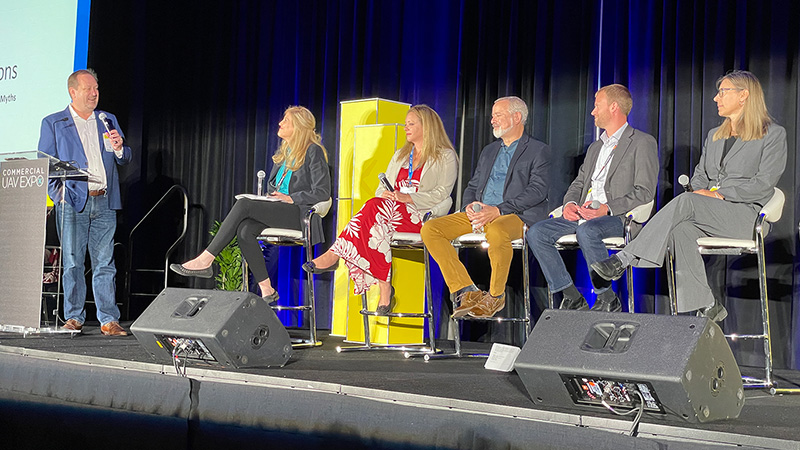
David Boultier from the FAA leads the panel discussion with subcommittee leaders from the ARC committee. | Credit: The Robot Report
In the meantime, drone companies can operate BVLOS under waivers. Use cases such as long infrastructure (i.e. pipelines and power lines) inspection are the early markets where BVLOS is already in operation, given that these flights are typically away from human-populated areas.
Trends
Walking through the expo floor populated with wares from more than 230 vendors, there were a couple of obvious trends in drone design.
Trends include:
- Most drones on display were designed for heavy lift operations. This requires a large number of motors/props to lift heavy loads. The majority of drones were either hexa-copters (6 prop) or octo-copters (8 prop) configurations.
- A number of fixed-wing, long-distance, long-flight drones were also on display. Many of these drones also feature vertical takeoff and landing (VTOL) to make them easy to operate.
- There were at least a half dozen tethered drones on display. I covered the launch of the new Volarious tethered drone kit for DJI M30 drones over on the Mobile Robot Guide.
- Tethered drones are useful for search and rescue, first responder and fire response applications. Tethered drones are quick to deploy and can fly for indefinite periods of time. They can also provide lighting for a command post. For fire operations, tethered drones remain at a specific known height and location which makes it safe for fire tankers to operate (aerial fire operations typically have to cease if any drones are airborne).
- In anticipation of the growth of the BVLOS applications, there is also a market for remote drone hangers. These remotely deployed hangers are self-opening/self-closing and protect a remote drone from the weather, vandalism and theft, while also providing auto charging.
- Tactical drones are another subsegment of drone operations to support police, military and search and rescue (CAR) operations. These drones are ruggedized, quick to deploy and include features such as redundant systems to help ensure survival. The drones are designed to fly into buildings, crash into walls and ceilings without damaging the props. They include options such as microphones to listen and auto-righting if the drone is knocked down to the ground upside down.
- Commercial drones are being deployed today for infrastructure inspection. The key applications include inspecting assets such as wind turbines, pipelines, bridges, buildings and power lines.
Drones are being used by police departments to map crime scenes. Attendees at the show had the opportunity to watch a live crime scene mapping demo after the expo floor closed on Thursday evening, presented by Sundance Media Group. Out in the convention center parking lot, a model lay motionless on the ground, like a corpse. A drone was then flown over and around the crime scene to acquire a series of images which can later be stitched together using photogrammetry software to create an accurate 3D representation of the scene. This data is now acceptable in court when questions are raised about a crime.
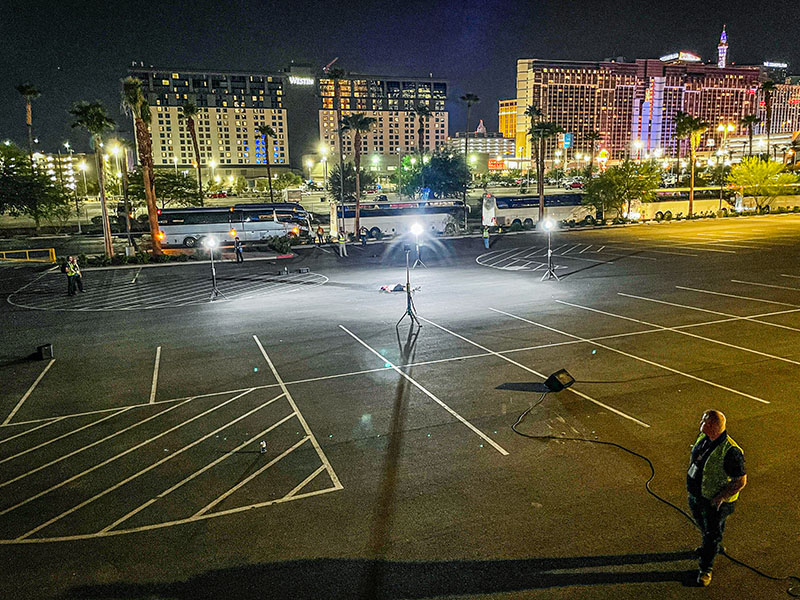
Sundance Media Group presented a CSI crime scene demo outside in the casino parking lot, simulating (with a live human model as the corpse) how drones are being used to accurately map crime scenes today. | Credit: The Robot Report
Takeaways
- The first takeaway from the show is the commercial drone market is healthy and growing. There were over 230 vendors at the show and 4000+ registrants. The show featured multiple tracks, including search and rescue, agriculture, inspection and drone autonomy.
- The second key takeaway is that commercial drones are getting bigger and more capable. It won’t be long before we’ll see commercial drones delivering packages to consumers at (or near) their homes.
- Finally, the definition of a drone is widening every day as new configurations are built, tested and certified for flight operations. Whether they are tiny enough to fit in your pocket, or larger than your car, there is a wide range of solutions for any use case.
Credit: Source link


Comments are closed.